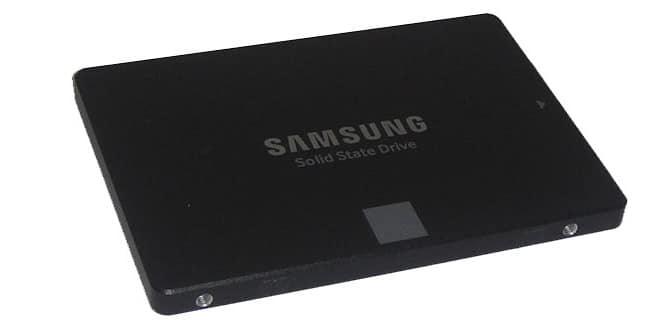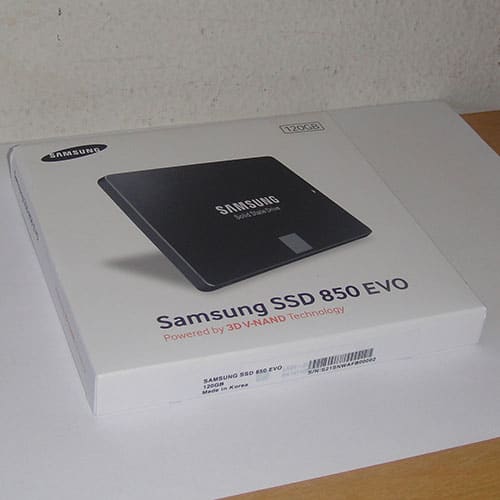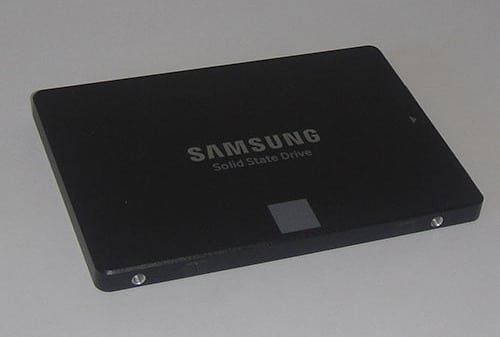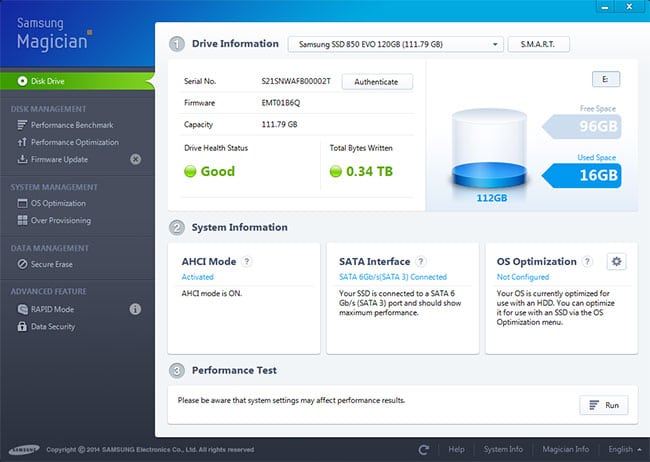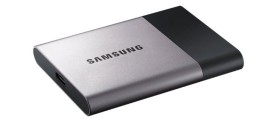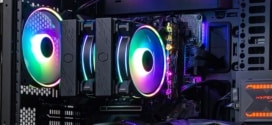Introduction
The Samsung 840 EVO is one of the best consumer SSDs on the market. The drive delivers good performance for its price. Earlier this year, Samsung launched the 850 Pro that uses the 3D V-NAND that boosts the performance, capacity and reduces power consumption for the SSDs over the 2D planar NAND. We were hoping that Samsung would deliver a consumer drive that also uses same 3D V-NAND as what it has done in the past. Well, our prayers have been answered as Samsung has unveiled the 850 EVO as the successor to the 840 EVO.
In case you have not noticed, the price of the SSDs is steadily declining. We have seen every manufacturer segmented their portfolio where it has a high-end performance grade drive and a more affordable model. Because the technology has matured, the affordable models are where it gets most interests. The Crucial MX 100 and the OCZ ARC 100 are a few examples of affordable SSDs that offers good performance for the price without cutting much corners. The Samsung 850 EVO is the latest drive that is going to compete against the already crowded market. Let’s see what kind of improvements has Samsung brought to their latest drive and how well is the Samsung’s latest 850 EVO compete against others.
Samsung 850 EVO
In a nutshell, the 850 EVO is taking the best of the 840 EVO and the 850 Pro. The 850 EVO combines the affordable pricing of the 840 EVO and the performance and power saving features from the 3D-NAND technology on the 850 Pro.
Much like what we have seen with the CPU, the move to the 3D design as oppose to the planar design transistors allows the manufacturers to pack even more onto the same area. When comes to making semiconductors, the size of the die is proportionally associated with its cost. Hence, the larger the die, the more expensive it would be to manufacture. Shrink the die size allows manufacturers to pack more dies per wafer, which lowers the production cost. Alternatively, manufacturers can opt to increase the number of transistors at the same die size. The added transistors brings new functionality where in the CPU, we often see additional instruction being added.
With the SSDs, more transistors often mean that we can pack even more storage capacity at the same area. The concept is simple. Rather than having many houses spreading out, it would be much more efficient use of the land by building an apartment multiple floors to house the same numbers of people in an area that takes a single house. The 3D NAND not only allows higher capacity, it also brings other added benefits such as lower power consumption and improve on the endurance. As an added benefit, it also brings down the price of the SSDs where 1TB drives is no longer considered as out of reach.
Like the 850 Pro, the 850 EVO uses Samsung 2nd Gen V-NAND that is manufactured with 40nm process node. It has 32 layers. Each die has a capacity of 86 Gbit (10.75 GB). Samsung has four different capacities available: 120GB, 250GB, 500GB, and 1TB.
| Model |
MZ-75E120B/AM
|
MZ-75E250B/AM
|
MZ-75E500B/AM
|
MZ-75E1T0B/AM
|
| Capacity (GB) |
120
|
250
|
500
|
1000
|
| Controller |
MGX
|
MGX
|
MGX
|
MEX
|
| NAND |
32 layer 3D V NAND
|
32 layer 3D V NAND
|
32 layer 3D V NAND
|
32 layer 3D V NAND
|
| DRAM cache (MB) |
256 LPDDR2
|
512 LPDDR2
|
512 LPDDR2
|
1024 LPDDR2
|
| Seq Read |
540
|
540
|
540
|
540
|
| Seq Write (non Turbo) |
520 (150)
|
520 (270)
|
520 (420)
|
520 (420)
|
| 4K Random Read QD1/QD32 |
10K/94K
|
10K/97K
|
10K/97K
|
10K/98K
|
| 4K Random Write QD1/QD32 (non Turbo) |
40K/88K (38K)
|
40K/88K (70K)
|
40K/90K (80K)
|
40K/90K (80K)
|
| Total Bit Write |
75 TB
|
75 TB
|
150 TB
|
150 TB
|
| Power Idle read and write | 3.7 W/ 4.4 W | 3.7 W/ 4.4 W | 3.7 W/ 4.4 W |
3.7 W/ 4.4 W
|
| Device Sleep |
2mW
|
2 mW
|
2 mW
|
4mW
|
| Warranty |
5 year
|
5 year
|
5 year
|
5 year
|
| Price (USD) |
99.99
|
149.99
|
269.99
|
499.99
|
You would notice that only the 1TB drive uses the Samsung MEX controller while the rest of the drives uses MGX controller. The MEX controller is the same controller found on the last year’s 840 EVO and this year’s 850 Pro. It is a triple Cortex R4 design with SATA 3.1 support. We asked Samsung for the difference between the MGX and MEX controller but we have yet to heard back from them. We believe it is probably the same design as the MEX but possibly at lower clockspeed and slightly different firmware. According to Samsung, the MGX controller is “designed for low capacity model considering client PC usage patterns.” The controller is optimized for sequential read/write and random low-level queue depth where Samsung believes to be typical workloads for a client system.
Besides the difference in the controller, we can see that the onboard DRAM cache is also different where the 120GB drive gets 256 MB, 250GB and 500GB get 512MB, and the 1TB gets 1024MB of LPDDR2.
In terms of performance, you would notice that Samsung has managed to deliver consistent performance across the different capacity drives. Normally, with SSDs, lower capacity drives often suffered slower performance due to lack of parallelism. With the 850 EVO, the 120GB drive is almost as fast as its larger capacity drives. So, essentially when you are looking to purchase one of the 850 EVO, you only have to decide how big of the storage space you would need and not too worry about the performance difference. Do note that the write performance rate above is based on Samsung’s TurboWrite technology. Without the Turbo, the lower capacity drive still performs worse than its larger counterparts.
Because of the improved endurance from the 3D V-NAND, all drives are backed with 5 year warranty. The 120GB and 250GB drives are rated with 40GB per day write for a total of 75 TB of write while the 500 GB and 1TB drives doubles that amount. This puts Samsung 850 EVO in a very unique position as most affordable SSDs are rated with less write per day and carry 3 yeas warranty.
All drives feature AES 256-bit full disk hardware-based encryption. TCG/Opal V2.0, IEEE1667 security. They also support TRIM, Garbage collection, and SMART.The 850 EVO carries all of the features found on the 850 Pro. It comes with improved TurboWrite, RAPID Mode 2.0, and improved power efficiency.
The 850 EVO comes with Samsung Magician software utility and DATA Migration tool.
The Magician software is a very well design with clean UI where it offers information about the drive. It also allows you to update the firmware of the drive, adjust the over provisioning of the drive, secure erase the drive, and configure the RAPID Mode.
Review Overview
Performance - 9
Value - 8.5
Quality - 9.5
Feature - 9.5
Innovation - 9.5
9.2
Samsung 850 EVO 120GB
The Samsung 850 EVO offers excellent performance and features. Backed with 5 year warranty, the drive is definitely the best all-around SSD that your money can buy. We give the 850 EVO our coveted Golden Bear Award.
 Bjorn3D.com Bjorn3d.com – Satisfying Your Daily Tech Cravings Since 1996
Bjorn3D.com Bjorn3d.com – Satisfying Your Daily Tech Cravings Since 1996
